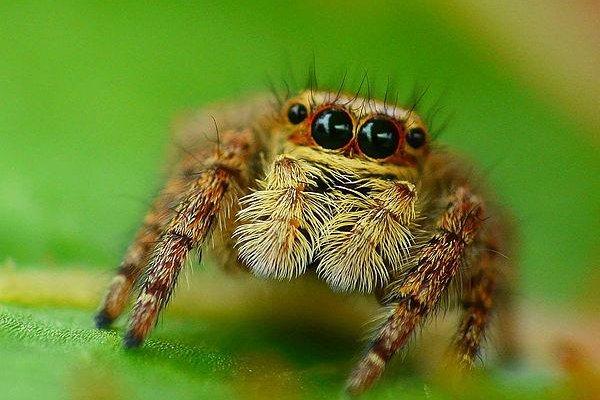In a surprising twist to spider courtship, female jumping spiders from two distinct species have shown a clear preference for the vibrant red males of one species, a choice that is blurring species boundaries and leading to hybridization. This fascinating discovery, reported by IFLScience, sheds new light on the complexities of mate selection and evolutionary dynamics within these visually striking arachnids. The findings challenge traditional notions of species isolation and open fresh avenues for understanding how sexual selection can drive genetic mixing in nature.
Female Jumping Spiders Show Strong Preference for Red Males in One Species
In a surprising twist to the mating rituals of jumping spiders, recent research reveals that females of one species exhibit a pronounced preference for males adorned in vibrant red coloration. This striking choice contrasts sharply with the typically muted color palettes of jumping spiders, underscoring the role of visual cues in sexual selection. Researchers observed that these females consistently favored red males during courtship displays, highlighting how color can serve as a powerful driver in mate selection and evolutionary trajectories within arachnid communities.
Interestingly, this preference has broader implications beyond simple attraction. The red males hail from one species, while the females belong to another closely related species, leading to frequent hybridization events. Such cross-species mating challenges traditional notions about reproductive isolation in spiders. Below is a summary of observed behaviors and outcomes:
| Species | Male Coloration | Female Preference | Hybridization Rate |
|---|---|---|---|
| Species A | Bright Red | High | 22% |
| Species B | Dull Brown | Low | 5% |
- Visual attraction: Red males perform elaborate dances to catch female attention.
- Ecological impact: Emerging hybrid populations exhibit mixed traits, complicating species boundaries.
- Conservation note: Hybrid vigor may alter local ecosystem dynamics.
Implications of Mate Choice on Hybridization Between Two Species
The selective preference of female jumping spiders for the striking red males of one species has profound consequences for interspecies breeding. This distinctive coloration acts as a powerful sexual signal, overriding typical species boundaries and prompting females to choose mates based on appearance rather than species identity. Such mate choices blur reproductive barriers, facilitating hybridization events that were previously considered rare. Scientists note that these hybrid offspring could possess a mix of traits influencing survival and adaptability, potentially reshaping the local spider population dynamics.
The ramifications extend beyond mere mating preferences, affecting ecological interactions and evolutionary trajectories. Notably, hybridization resulting from these preferences may lead to:
- Increased genetic diversity, introducing novel gene combinations that could enhance resilience
- Altered behavioral traits, influencing predator avoidance and mating rituals
- Challenges for species conservation, as clear species distinctions become muddled
| Species | Male Coloration | Female Preference | Hybridization Rate |
|---|---|---|---|
| Species A | Dull Brown | Low | 5% |
| Species B | Vibrant Red | High | 35% |
| Research Focus | Purpose | Expected Outcome |
|---|---|---|
| Genomic Sequencing | Identify hybrid genetic markers | Map gene flow between species |
| Ecological Impact | Observe habitat niche shifts | Predict ecosystem changes |
| Behavioral Observations | Evaluate mating preferences | Understand reproductive barriers |
To Conclude
The discovery that female jumping spiders from two distinct species show a marked preference for the striking red males of one group offers new insights into the complexities of mate choice and species boundaries. This preference not only challenges traditional notions of reproductive isolation but also highlights how sexual selection can drive hybridization in the wild. As researchers continue to unravel the genetic and ecological consequences of these cross-species encounters, this finding underscores the dynamic interplay between attraction and evolution in shaping biodiversity.
